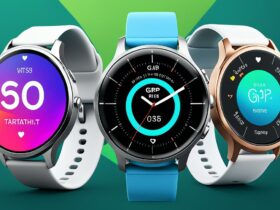Contents
1. Understanding the Importance of Windows Security
Windows security encompasses a range of measures that aim to prevent unauthorized access, data breaches, and malware infections. By comprehending the significance of Windows security, you can appreciate the potential risks and take appropriate steps to mitigate them.2. Choosing a Reliable Antivirus Program
Selecting a reliable antivirus program is a fundamental step in protecting your Windows system. Look for an antivirus solution that offers real-time scanning, automatic updates, and a robust malware detection engine. It’s essential to choose a reputable antivirus software from a trusted vendor to ensure comprehensive protection against viruses, ransomware, and other malicious software.3. Keeping Your Operating System Up to Date
Regularly updating your operating system is crucial for maintaining a secure environment. Operating system updates often include patches that address vulnerabilities and security loopholes. Configure your Windows system to receive automatic updates, or check for updates manually on a regular basis.4. Enabling and Configuring Windows Firewall
Windows Firewall acts as a barrier between your computer and external networks, filtering incoming and outgoing network traffic. Ensure that Windows Firewall is enabled and properly configured to provide an additional layer of defense against unauthorized access and potential network threats. Protecting Your System: Program Windows Security Guide5. Securing Your Web Browsers
Web browsers are common targets for cyber attacks. To bolster your system’s security, keep your web browsers updated and configure them to block pop-ups, disable unnecessary plugins, and enable privacy features. Additionally, exercise caution when visiting unfamiliar websites or downloading files from untrusted sources.6. Implementing Strong Password Practices
Passwords are often the first line of defense against unauthorized access. Utilize strong, unique passwords for each of your accounts and avoid using easily guessable information. Consider employing a password manager to securely store and generate complex passwords.7. Utilizing Two-Factor Authentication
Two-factor authentication (2FA) adds an extra layer of security to your accounts. Enable 2FA whenever possible, as it requires an additional verification step, such as a temporary code sent to your mobile device, to access your accounts. This significantly reduces the risk of unauthorized access, even if your password is compromised.8. Encrypting Sensitive Data
Encrypting sensitive data adds an extra layer of protection against unauthorized access. Utilize built-in encryption features provided by Windows or consider third-party encryption software to safeguard your confidential files and folders.9. Being Cautious with Email Attachments
Email attachments can harbor malware or phishing attempts. Exercise caution when opening email attachments, particularly from unknown senders. Scan attachments with an up-to-date antivirus program before opening them and never download or execute suspicious files.10. Avoiding Suspicious Websites
Navigating to suspicious websites can expose your system to various security risks. Be cautious while clicking on unfamiliar links, avoid downloading files from untrusted sources, and verify the legitimacy of websites before providing any sensitive information.11. Regularly Backing Up Your Data
Regular data backups are essential to protect your information from data loss caused by hardware failure, malware attacks, or accidental deletion. Set up automatic backups or perform manual backups regularly to ensure your data is safe and recoverable.12. Avoiding Untrusted Software Sources
Installing software from untrusted sources increases the risk of malware infections and system compromise. Only download software from reputable websites or official app stores to minimize the likelihood of encountering malicious software.13. Monitoring and Managing User Accounts
Maintaining strong user account security is crucial for overall system protection. Regularly review and manage user accounts on your Windows system, ensuring that each account has appropriate privileges and permissions. Remove any unnecessary or unused accounts to reduce potential vulnerabilities.14. Protecting Your System from Malware
Malware can wreak havoc on your system, compromising security and stability. Employ a reliable antivirus program to detect and remove malware. Additionally, exercise caution when downloading files or clicking on links, as these are common infection vectors.Conclusion
Protecting your system from security threats is an ongoing effort that requires proactive measures and vigilant practices. By implementing the recommended guidelines outlined in this article, you can significantly enhance the security of your Windows operating system. Remember, maintaining a strong security posture is crucial for safeguarding your personal and sensitive information.Windows vs Mac Laptop in 2023: Which is the Best Choice for You?
Which Gaming Option Offers Better System Security: Steam Deck or Gaming Laptops?
The steam deck vs gaming laptops comparison when it comes to system security is an interesting one. While both options offer certain levels of security, gaming laptops typically have more established security features, such as advanced encryption and secure boot technology. However, with its closed operating system and dedicated SteamOS, the Steam Deck offers a more controlled environment, reducing the risk of malware attacks. Ultimately, the choice depends on individual preferences and security priorities.







